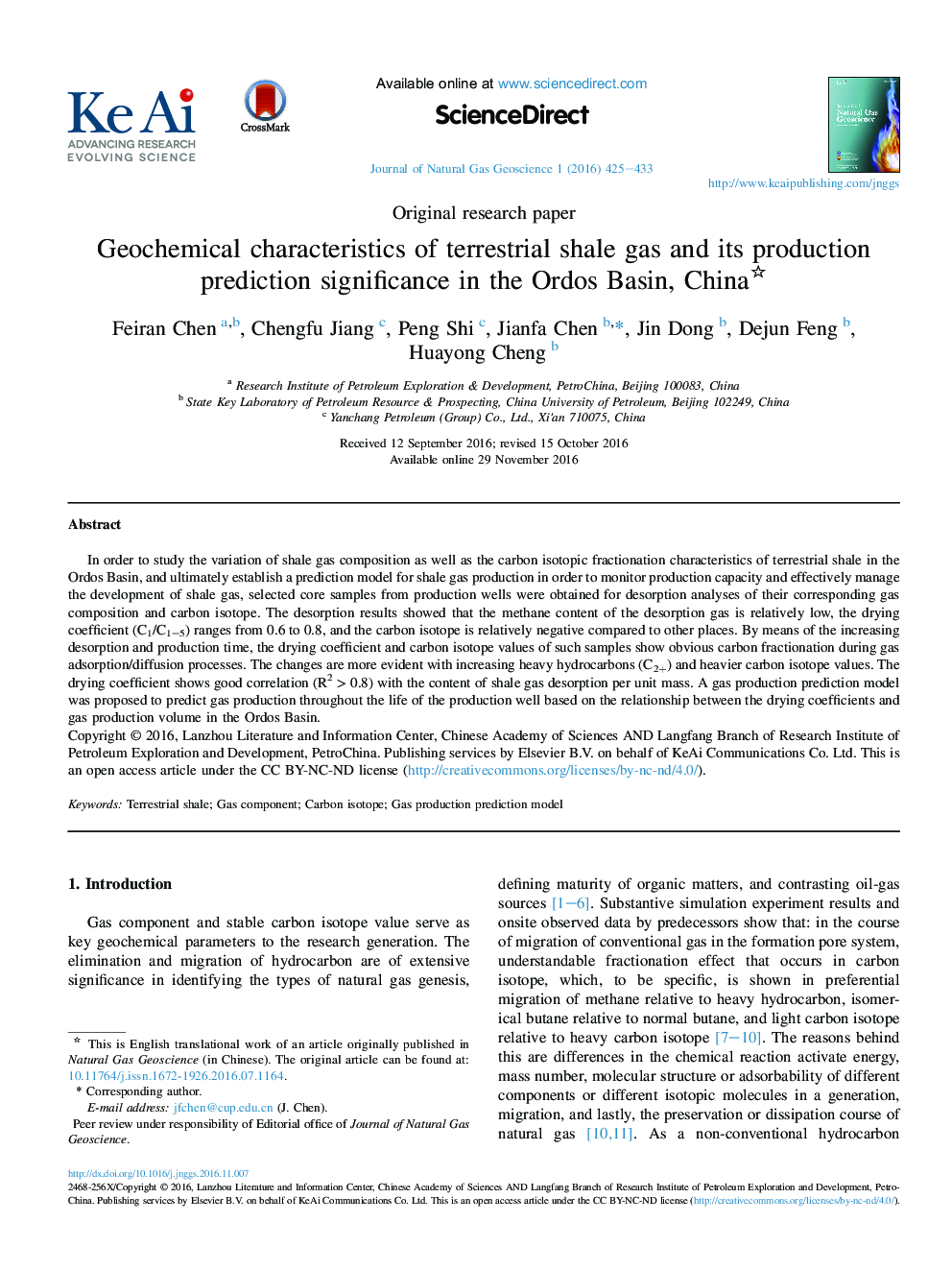| Article ID | Journal | Published Year | Pages | File Type |
|---|---|---|---|---|
| 8124233 | Journal of Natural Gas Geoscience | 2016 | 9 Pages |
Abstract
In order to study the variation of shale gas composition as well as the carbon isotopic fractionation characteristics of terrestrial shale in the Ordos Basin, and ultimately establish a prediction model for shale gas production in order to monitor production capacity and effectively manage the development of shale gas, selected core samples from production wells were obtained for desorption analyses of their corresponding gas composition and carbon isotope. The desorption results showed that the methane content of the desorption gas is relatively low, the drying coefficient (C1/C1-5) ranges from 0.6 to 0.8, and the carbon isotope is relatively negative compared to other places. By means of the increasing desorption and production time, the drying coefficient and carbon isotope values of such samples show obvious carbon fractionation during gas adsorption/diffusion processes. The changes are more evident with increasing heavy hydrocarbons (C2+) and heavier carbon isotope values. The drying coefficient shows good correlation (R2Â >Â 0.8) with the content of shale gas desorption per unit mass. A gas production prediction model was proposed to predict gas production throughout the life of the production well based on the relationship between the drying coefficients and gas production volume in the Ordos Basin.
Keywords
Related Topics
Physical Sciences and Engineering
Earth and Planetary Sciences
Geochemistry and Petrology
Authors
Feiran Chen, Chengfu Jiang, Peng Shi, Jianfa Chen, Jin Dong, Dejun Feng, Huayong Cheng,
